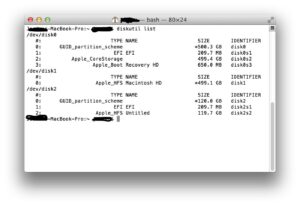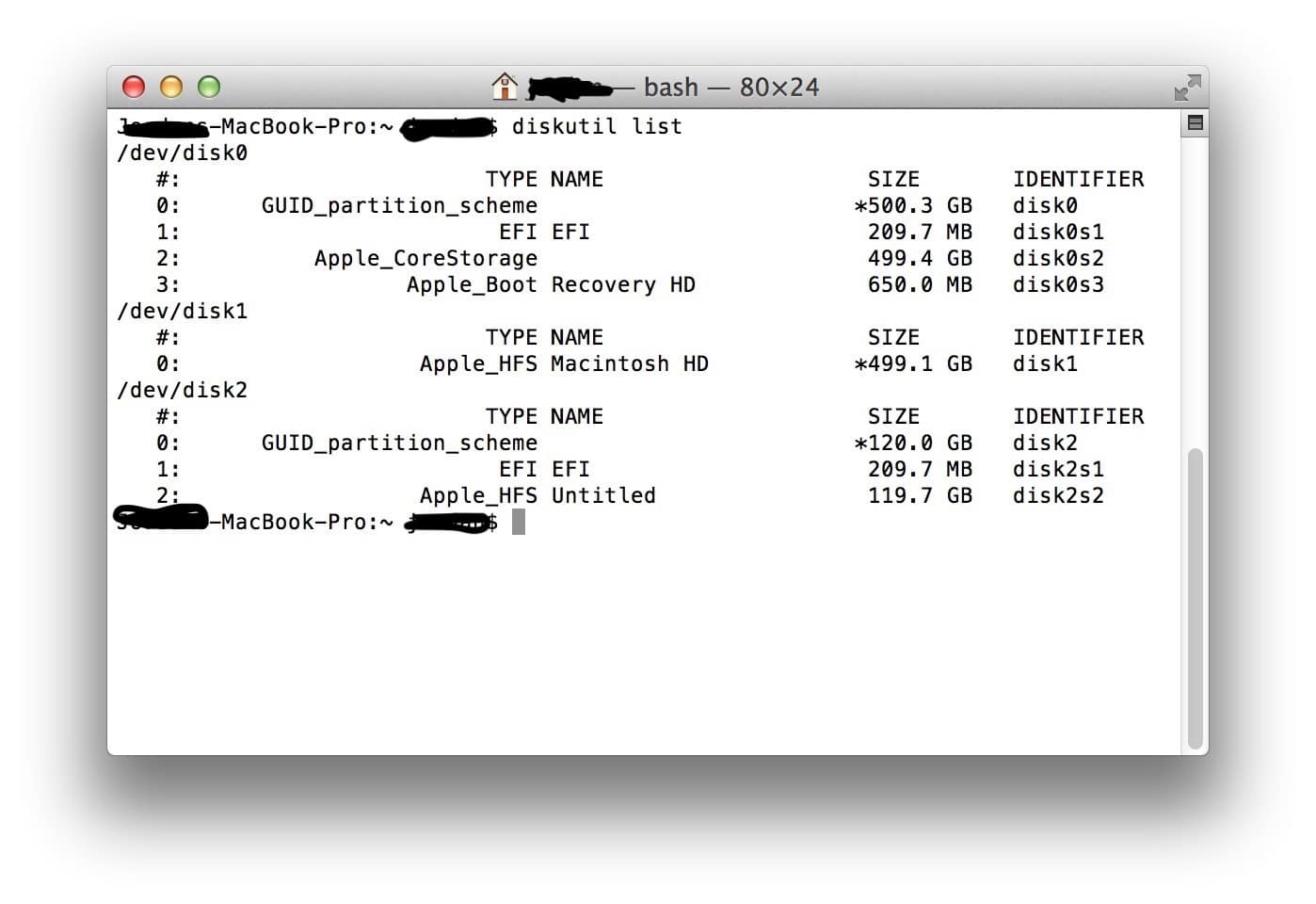If you can’t see Macintosh HD or SSD in Disk Utility
Start up from macOS Recovery:
Turn on your Mac, then immediately press and hold Command (⌘) and R until you see an Apple logo or other image.
If asked, select a user you know the password for and enter their administrator password.
From the utility window, select Disk Utility and click Continue.
Select Macintosh HD in the sidebar of Disk Utility. Can’t see Macintosh HD?
Check the disk on Terminal Command Line:
Turn on your Mac, then immediately press and hold Command (⌘) and R until you see an Apple logo or other image.
If asked, select a user you know the password for and enter their administrator password.
Click the utility menu, and select Terminal to Continue.
Write ” diskutil list” then hit the return key. You will see the following kind of list in the image. However, if you still can’t see the internal HD or SSD then its means there is something wrong with your Mac hardware/ disk drive.

If your disk still doesn’t appear in Disk Utility or Disk Utility reports that the erase process has failed, your Mac might need service. If you need help, please contact our support center at https://mymaccomputer.com.au/imac-repair-upgrade/

